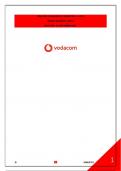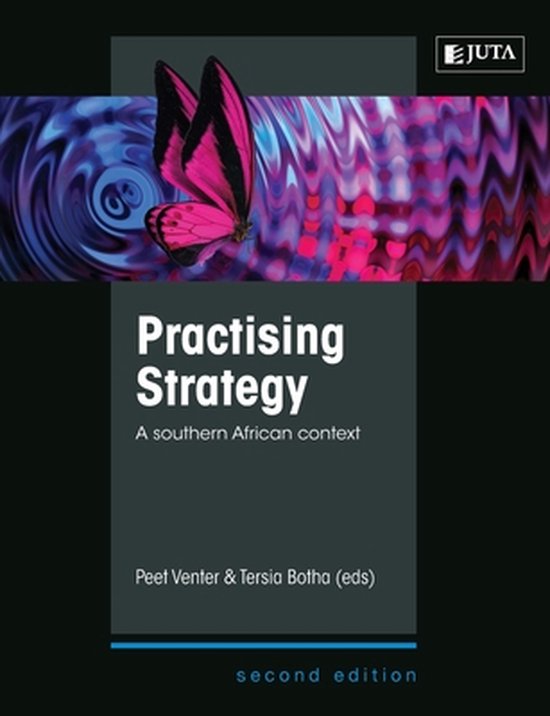MNG3701 ASSIGNMENT 2 SEMESTER 2 – 2024
UNIQUE NUMBER: 620712
DUE DATE: 16 SEPTEMBER 2024
© MNG3701 1
, TABLE OF CONTENTS
PAGE NO.
1. Introduction ……………………………………………………………………………………… 3
2. Question 1: The Importance of Analyzing the Micro-Environment and
Vodacom's Strengths and Weaknesses
2.a. The Importance of Analyzing the Micro-Environment ……………………………. 4
2.b. The Strengths and Weaknesses of The Vodacom Group ………………………… 5-6
3. Question 2: Strategic Competitor Analysis
3.a. The Four-Corner Analysis 7
3.b. A Major Competitor of Vodacom 7
3.c. Four-Corner Analysis of Vodacom’s Competitor 8-9
4. Question 3: The Capabilities and Value Chain Analysis of Vodacom …… 10
5. Question 4: The Differentiation Strategy ……………………………………………. 11 - 12
6. Conclusion ………………………………………………………………………………………… 13
7. Reference List ……………………………………………………………………………………. 14
© MNG3701 2
, 1. Introduction:
This essay focuses on Vodacom, a leading African connectivity, digital, and financial services
provider. The essay highlights the importance of analyzing the environments that influence
the sustainability and success of Vodacom in the highly competitive telecommunications
sector. Various methods to assess both the internal and external environments are
discussed, followed by an in-depth analysis of Vodacom’s operational strengths and
weaknesses.
Additionally, the essay delves into the company’s competitive landscape through strategic
tools like the four-corner analysis. Lastly, Vodacom’s business-level strategy is evaluated in
relation to the environmental analyses conducted, offering insights into how the company
maintains its competitive edge in the dynamic African market.
© MNG3701 3
, 2. The Importance of Analyzing the Micro-Environment and Vodacom's Strengths and
Weaknesses
2. a. The Importance of Analyzing the Micro-Environment:
The internal or micro-environment of an organisation is commonly referred to as the
operating environment. Essentially, this environment consists of the factors that are within
the control of management or that can be managed through management decision-making.
The aim of an internal environmental analysis is to identify organisational strengths and
weaknesses.
In essence, analyzing the micro-environment is crucial because it helps businesses such as
Vodacom understand factors directly affecting their operations, such as customers, suppliers,
competitors, and internal capabilities. This insight enables companies to identify
opportunities, manage risks, and make informed decisions to maintain a competitive
advantage.
There are several methods that can be used to analyse the micro-environment of an
organisation.
The Resource-based View is an approach that focuses on an organisation’s resources and
how they can be exploited through capabilities to build a sustainable competitive advantage.
A Functional Analysis deals with the functional areas within an organisation, such as
finance, marketing, production, administration and human resources. By analysing these
functional areas, the organisation can identify resources, strengths and weaknesses,
capabilities and core competencies.
A Value Chain Analysis focuses on the activities that an organisation performs to create
value for its customers and other stakeholders. These activities are divided into primary and
secondary activities. Primary activities contribute to the transformation of inputs and add
value to the end product. Secondary activities do not directly add customer value but are
seen as important activities because they enable the primary activities.
© MNG3701 4





